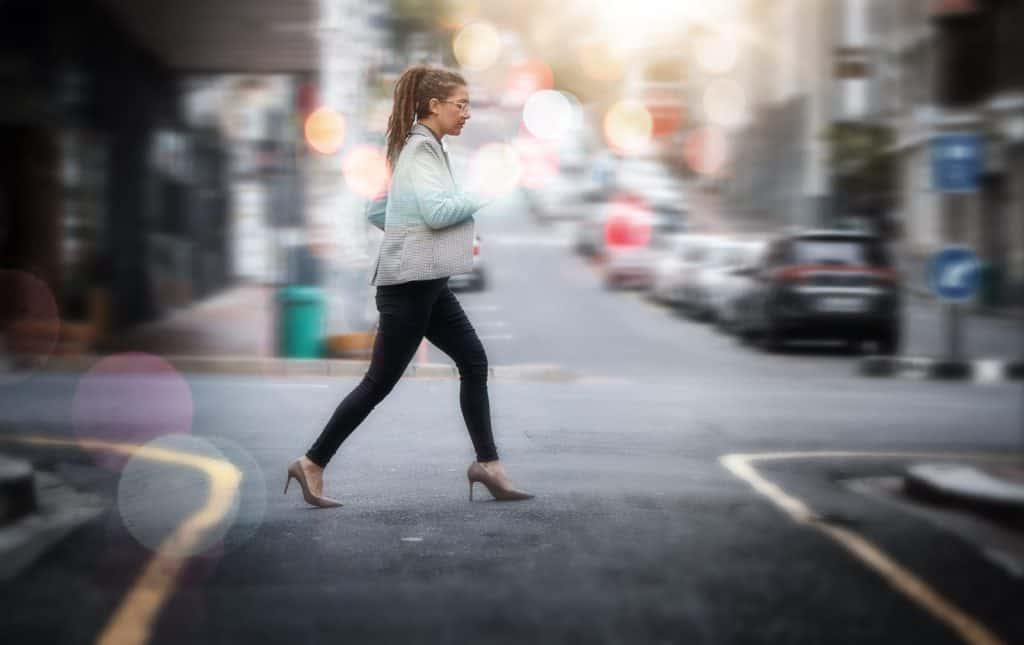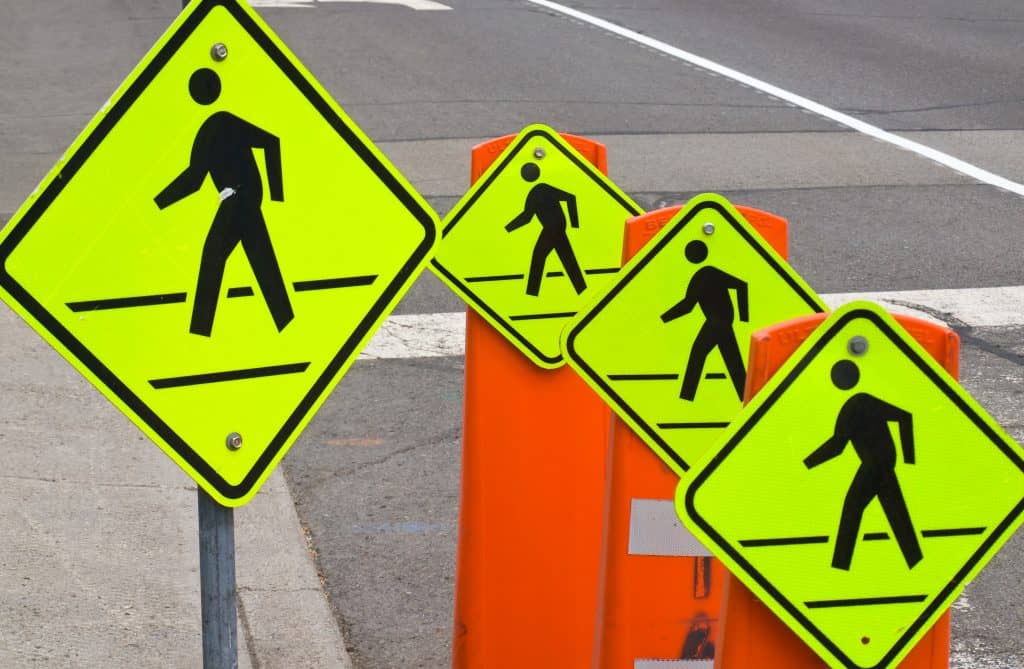
The word ‘pedestrian‘ comes from the Latin word ‘pedester’. It doesn’t just mean a person who is walking. It’s a term that includes all the different parts of walking that have to do with our culture, history, and the things we build for walking, like sidewalks (Merriam-Webster, 2021).
In the past, people liked walking so much that it became a sport. During the 18th and 19th centuries, walking races were popular and many people came to watch (Gillmeister, 1989).
Today, when we design cities, we think about how to make it easy and safe for people to walk. This is why we build sidewalks and crosswalks and find other ways to slow down cars (Jacobsen, Racioppi, & Rutter, 2009).
But even though we’ve made progress, walking can be hazardous. According to the Governors Highway Safety Association, 6,721 pedestrians died in the United States in 2020. That’s more than in the years before (GHSA, 2021).
Pedestrian safety is a serious concern. We need to figure out how to make walking safe, even as our cities get bigger and more cars are on the road. To solve this problem, we need to understand the changes and chances we have to improve walking.
Etymology
The word ‘pedestrian’ comes from the Latin ‘pedester’, which means ‘walking on foot’. This word became part of the English language in the 1700s and was used to talk about people who walked to get around.
The meaning of the word ‘pedestrian’ has changed over time. The word isn’t just about walking but also about town planning and road rules.
We often use ‘pedestrian’ to discuss walkers’ right-of-way and space requirements, especially when cars and trucks are present. This is important because it helps to keep pedestrians safe.
History
Looking back at history, the word ‘pedestrian’ has dramatically changed. Long ago, walking was the primary mode of transportation. People walked to get places. They also used it for fun and games.
People started competing in walking games in the 18th and 19th centuries. These games were called ‘pedestrianism.’ Some walkers became very famous. One of them was Captain Robert Barclay Allardice. He was known for being able to walk very far without getting tired. Another famous walker was Ada Anderson. She became famous for walking long distances without stopping.
At the time, people liked to watch walking games. They liked it as much as we like watching sports today. Walking was more than just a way to get around. It was a way to show how strong and skilled you were.

Footpaths and Roads
Pedestrian paths are a vital part of roads. Depending on where they live, people may call them sidewalks, pavements, or footpaths. These paths are crucial in city planning and how we design traffic flow. We increasingly see paths for walking and riding bikes, showing a trend toward roadways that work for all users.
In designing these paths, we need to think about a few things:
- They need to be wide enough for people to pass each other safely.
- They need to be made from smooth materials to walk or ride on.
- They need to be far enough away from the road for cars.
These factors are all crucial so everyone can use the paths and stay safe.
The fact that footpaths are part of road design shows how important it is for people to be able to walk around cities. It is so important to get the design of footpaths right to help encourage more people to walk and reduce the number of car vs pedestrian accidents.
Safety Issues
The safety of people walking on the streets is a big problem. Many reports show that when accidents happen with pedestrians, they often are badly hurt or even die. To help with this problem, we need to do many things.
One of these things is to look at how pedestrians and cars interact. We can make crosswalks easier to see and have signals that tell people when to walk. Cars can have systems that help them see walkers. We also need to teach people about the rules for pedestrians on the road.
Another thing we can do is make the places where people do walk safer. We can make more areas where only pedestrians are allowed. We can put up barriers to keep cars away from walkers. We can also put better lights around places where people walk and cross the street.
Another thing we can do is make new traffic regulations. These statutes could require more severe punishments for drivers who fail to follow pedestrian safety rules. The new regulations could also fund safe places for pedestrians to reduce traffic deaths.
Doing all these things can make the streets safer for pedestrians. They can change the way our towns and cities work and get people involved in keeping everyone safe.
Mid-Columbia Insurance – Your Trusted Insurance Agent
Call (509)783-5600 and speak to one of our independent insurance agent professionals today, or click “Get a Quote” to request an insurance quote.
Get the coverage you want at a price you can afford!
« Back to Glossary Index